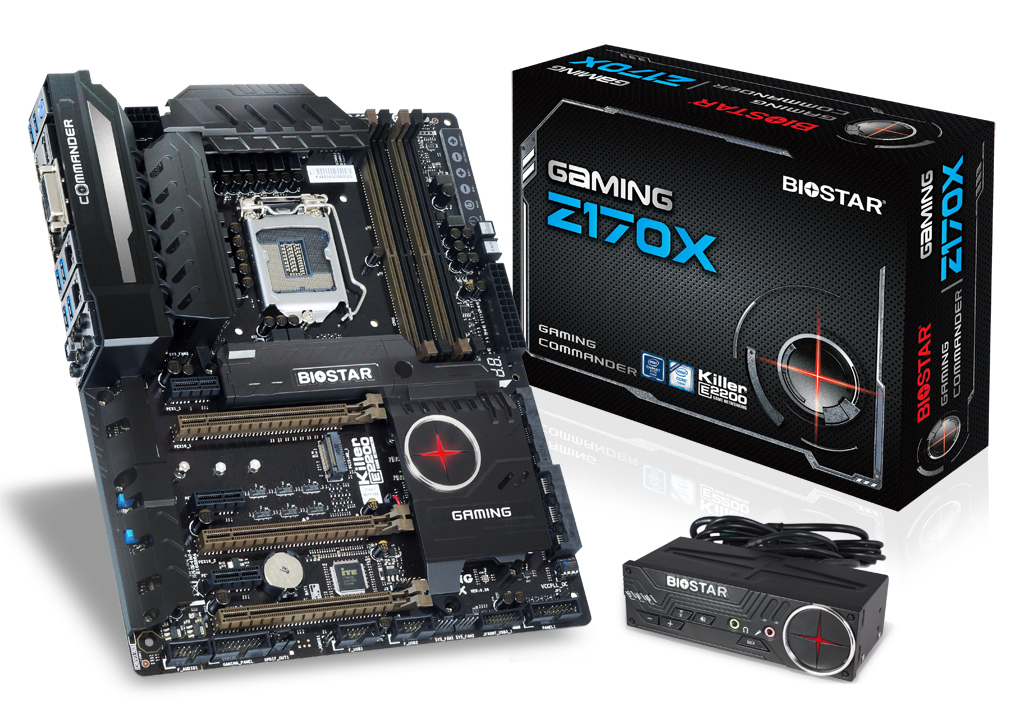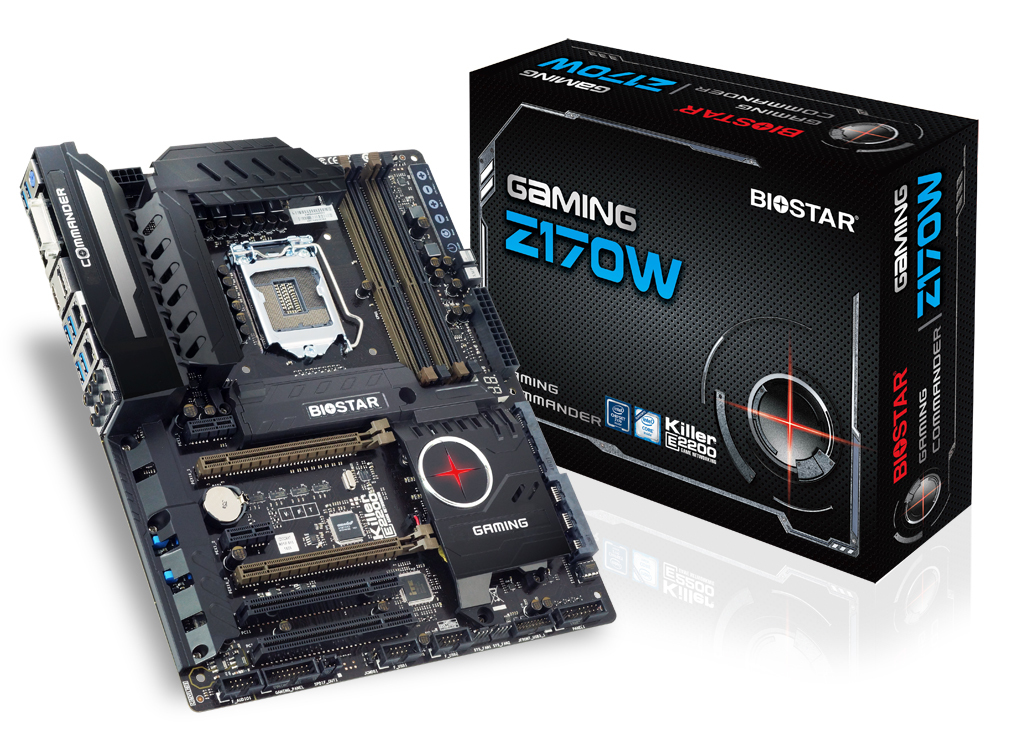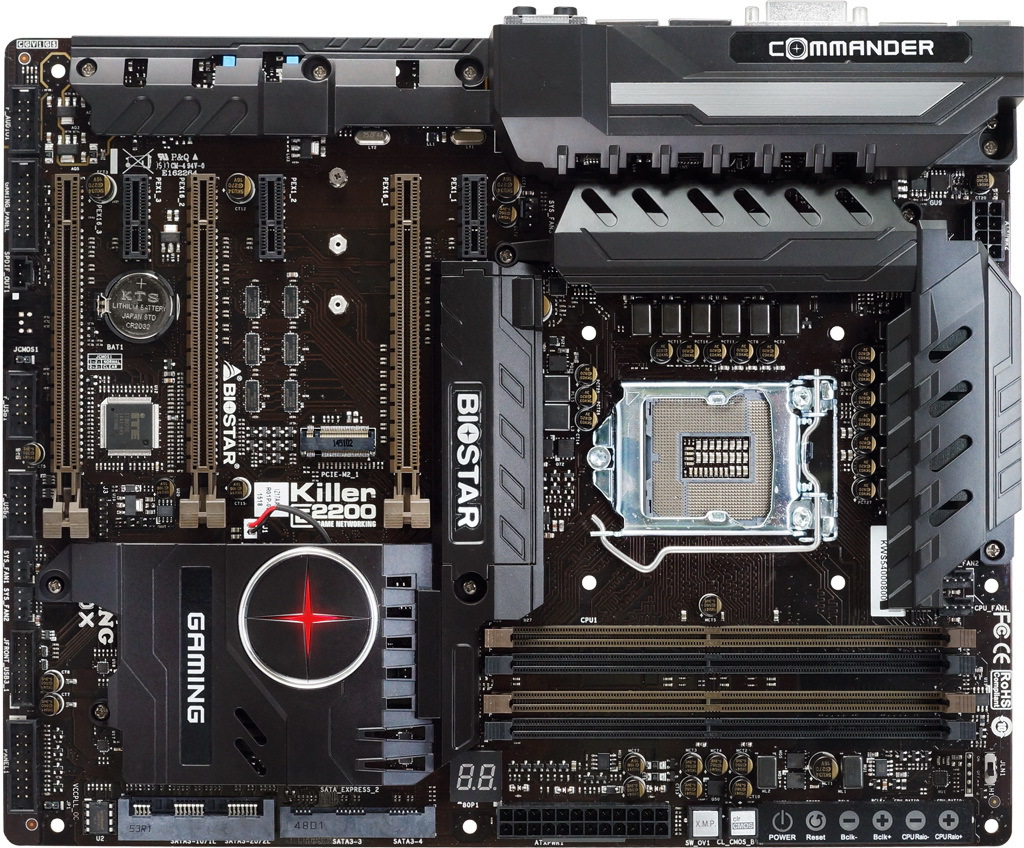Biostar Tries Its Hand At Z170 But Overlooks Design Flaw
With the release of Intel's Skylake processors, motherboard manufacturers are scrambling to get new Z170 boards released and on the market. Biostar isn't announcing as many boards as ASRock, Asus, Gigabyte or MSI, though, instead pushing out only three boards (like EVGA). However, it appears that there are a few problems in the board design.
Don't Want ATX? Too Bad.
It may disappoint some users to see that Biostar is only shipping Z170 motherboards in the ATX form factor. This strategy is questionable, as Biostar effectively removes itself from competition in the mini-ITX and microATX form factors. It is likely that Biostar plans to use motherboards incorporating other 100 Series chipsets to target these chassis, but, at least for the time being, the company is leaving this segment of the market unattended.
Nice Specs With Dual NICs. What's Not To Like?
As far as the feature set of these motherboards go, not a lot of changes from board to board. For onboard connections, the top end motherboard, the Biostar Gaming Z170X, features three SATA Express connectors, two M.2 Key M slots, and a solitary USB 3.1 Type-C port. The board uses both an Intel i219V and a Killer E2201 for interfacing with the network. The audio sub-system is built around a Realtek ALC898 codec.
The mid-range board, christened Biostar Gaming Z170W, is essentially a slightly cut back version of the flagship board. The board loses one M.2 Key M and the M.2 Key A. It keeps the dual NIC setup, but the Intel NIC is gone, replaced with a Realtek RTL8111H. Very little else changes between the Z170X and Z170W.
Moving to the last board, the Biostar Gaming Z170T, we see that a few more features are cut. The board drops one SATA Express connector, and USB 3.1 support is also removed. Oddly enough, there are still two NICs onboard, but this configuration changes again to use the Intel i219V and Realtek RTL8111H. The last real change of consequence on this board is the downgraded audio chipset, which is now a Realtek ALC892.
Where The Trouble Starts
Examining these boards, we find that there is one major flaw in their design, and it is related to the PCI-E systems. For the PCI-E connectivity on the Z170X, Biostar opted to place three PCI-E x16 3.0, three PCI-E x1 3.0 slots, and a PCI-E M.2 Key A slot. The Z170W dropped one PCI-E x16 and PCI-E x1 slot each, which are replaced with two legacy PCI ports. The Z170T's PCI-E connectivity is the same as the Z170W. All of this appears to be fine, but how these ports are configured is what causes the problem.
The new Z170 chipset replaced its legacy PCI-E 2.0 lanes for 20 lanes based on the much faster PCI-E 3.0 standard. In conjunction with the PCI-E lanes from the CPU, the motherboard has a total of 36 lanes at its disposal, and is technically capable of running three GPUs in an x16 + x8 + x8 configuration.
Get Tom's Hardware's best news and in-depth reviews, straight to your inbox.
On the Z170X board, however, Biostar opted to use only the CPU's PCI-E lanes for the x16 slots. The result is that many of the chipset's PCI-E 3.0 lanes go unused, and a three-GPU setup is forced into a bandwidth-constrained x8 + x4 + x4 setup instead, hampering performance.
The Z170W board doesn't really have an issue with PCI-E, as both x16 connectors run off the CPU, allowing for an x8 + x8 configuration. On the Z170T, however, the second PCI-E is connected to the chipset. On the one hand, this would be great if Biostar let it have 8 or 16 of the chipset's PCI-E lanes, but instead it gets tied down to a sparse four lanes. This handicaps the board and will result in throttling when using a multi-GPU setup between two reasonably high-end GPUs.
Overall, these motherboards are about what we would expect to see from Biostar. The company tends to slightly lower spec chipsets to help reduce costs. This is why we see the Killer 2201 chipset on these boards, while most companies are opting to use the Killer 2400 NIC instead.
The end result is typically a board that is still feature rich, as the chips it uses aren't bad by any means, and there's some cost savings there, too. What is surprising though, is that we see the PCI-E systems on these boards configured poorly. It isn't a cost cutting measure, but one of poor design, which might come back to bite Biostar in the long run.
Follow Michael Justin Allen Sexton @LordLao74. Follow us @tomshardware, on Facebook and on Google+.
-
Avus Honestly even if Biostar make the MB in other size there is not much reason I will choose it over Asus, Gigabyte, Asrock or even MSI...Reply -
spdragoo So....what, exactly, is the point of having multiple NICs? Even if you had dual connections through your router, that would only help your LAN file transfer speeds (which are already able to reach Gigabit speeds on standard routers), & won't affect your Internet speed (all Internet is limited by whatever broadband connection you have to your house, most of which are not only nowhere near Gigabit speeds, but also ends up just splitting the connection between both NICs, so you don't get any increased speed anyway).Reply -
Xivilain An attempt was made.Reply
Maybe they could have dropped the oversized plastic aesthetics, "military-style" heatsinks, onboard buttons, and LED debug indicator. But I like the brown/black color scheme! -
jimmysmitty Reply16411680 said:So....what, exactly, is the point of having multiple NICs? Even if you had dual connections through your router, that would only help your LAN file transfer speeds (which are already able to reach Gigabit speeds on standard routers), & won't affect your Internet speed (all Internet is limited by whatever broadband connection you have to your house, most of which are not only nowhere near Gigabit speeds, but also ends up just splitting the connection between both NICs, so you don't get any increased speed anyway).
The one benefit is that you can have one NIC doing LAN transfers and another doing WAN transfers.
I also do find it sort of pointless but they are not the first to do it nor will they be the last.
There is one benefit, if you ever get above 1Gbit internet and since there are no on-board 10Gbit NICs for consumers yet you would be able to utilize more bandwidth. -
Rookie_MIB The Z170 chipset gives you 26 PCI-e lanes, the CPU another 16, total of 42 lanes.Reply
6 are reserved for USB3
2 are capable of handling 2 gigabit ports
M2x4 x 2 is another 8 lanes, IF they're both in use simultaneously
Worst case then is 26 lanes remaining. That leaves enough with some simple switches to handle a full x8/x8/x8 tri-GPU setup. YES, it does mean whomever is putting it together will actually have to plan out the build appropriately, but why would they not give the people the option? Doing it this way makes it impossible to utilize the flexibility that the new Skylake setup allows.
-
3ogdy Avus is right. Biostar is so so close to the bottom of my motherboard choices for the systems I build, that whatever the color scheme, the format or the product they have, it's not gonna be a concern, unless ASUS, Gigabyte, MSI, EVGA, ASRock (in that specific order - I rarely see myself going past the second option) can't get a specific thing right - chances are very low for that to happen across all manufacturers mentioned, BUT...if it happens, I might turn to...that's right....INTEL and only after that to Biostar.Reply -
IInuyasha74 ReplyThe Z170 chipset gives you 26 PCI-e lanes, the CPU another 16, total of 42 lanes.
6 are reserved for USB3
2 are capable of handling 2 gigabit ports
M2x4 x 2 is another 8 lanes, IF they're both in use simultaneously
Worst case then is 26 lanes remaining. That leaves enough with some simple switches to handle a full x8/x8/x8 tri-GPU setup. YES, it does mean whomever is putting it together will actually have to plan out the build appropriately, but why would they not give the people the option? Doing it this way makes it impossible to utilize the flexibility that the new Skylake setup allows.
No, check our review of the Skylake CPUs. We covered the Z170 chipset in this review too.
http://www.tomshardware.com/reviews/skylake-intel-core-i7-6700k-core-i5-6600k,4252-2.html
The Z170 chipset has 20 PCI-E 3.0 lanes. There is a diagram of it from Intel in addition to what is actually written. 6 are not reserved for USB 3, the chipset has dedicated USB 3.0 hardware built in which doesn't require PCI-E. None of them are actually reserved for anything, but you are right that one or two would be dedicated to the LANs.
You are right that if both are in use, the M.2 slots take up an extra 8 lanes. The end result is that if, worst comes to worst, you only have maybe 10 PCI-E 3.0 lanes available. It is more than enough to do an 8x 8x 8x setup though. I think the designers are just too accustomed to working with the Z77-Z97 chipsets. They are used to running everything into the CPU. -
Xivilain Reply16412141 said:Avus is right. Biostar is so so close to the bottom of my motherboard choices for the systems I build, that whatever the color scheme, the format or the product they have, it's not gonna be a concern, unless ASUS, Gigabyte, MSI, EVGA, ASRock (in that specific order - I rarely see myself going past the second option) can't get a specific thing right - chances are very low for that to happen across all manufacturers mentioned, BUT...if it happens, I might turn to...that's right....INTEL and only after that to Biostar.
Intel stopped manufacturing Motherboards a while ago...
http://www.tomshardware.com/news/intel-ceases-motherboard-production-haswell,20631.html
Every manufacturer makes shitty mbs and great mbs. To claim ASUS is better than other brands, like saying Ford makes the best trucks, means you might miss out on some fantastic products. -
3ogdy Reply16412290 said:16412141 said:Avus is right. Biostar is so so close to the bottom of my motherboard choices for the systems I build, that whatever the color scheme, the format or the product they have, it's not gonna be a concern, unless ASUS, Gigabyte, MSI, EVGA, ASRock (in that specific order - I rarely see myself going past the second option) can't get a specific thing right - chances are very low for that to happen across all manufacturers mentioned, BUT...if it happens, I might turn to...that's right....INTEL and only after that to Biostar.
Intel stopped manufacturing Motherboards a while ago...
http://www.tomshardware.com/news/intel-ceases-motherboard-production-haswell,20631.html
Every manufacturer makes shitty mbs and great mbs. To claim ASUS is better than other brands, like saying Ford makes the best trucks, means you might miss out on some fantastic products.
I hear you, I'm not saying Biostar doesn't make amazing products. I'm sure there's plenty of stuff worth getting from Biostar, but as far as my personal motherboard preferences go, I've never been dissatisfied with ASUS, Gigabyte and ASRock more at the lower-end of the spectrum. It's just me. Buy Biostar, Buy ASUS, Buy whatever fits your needs and budget.



